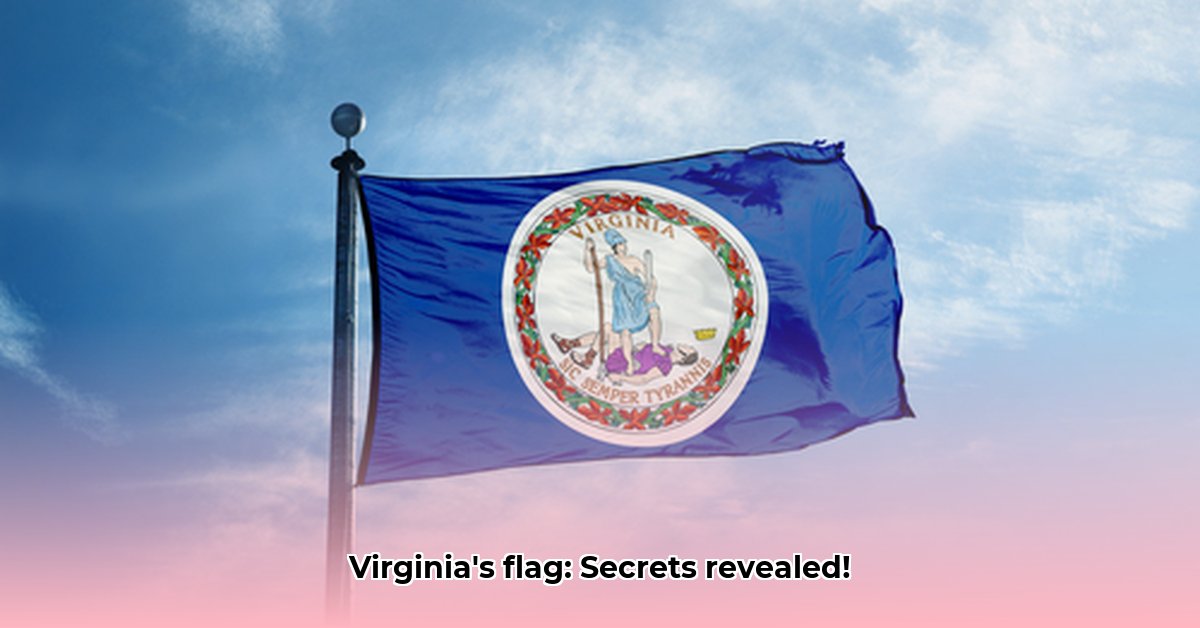
A Banner of Contradictions: Unraveling the Virginia State Flag
The Virginia state flag, a seemingly simple design of a blue field bearing the state seal and the motto "Sic Semper Tyrannis," holds a complex and often contradictory history. More than just a pretty picture, it's a visual tapestry woven from threads of revolution, rebellion, and reconciliation, prompting ongoing debate about its true meaning and appropriateness. This exploration delves into the flag's evolution, its contested symbolism, and the enduring legacy it represents. For a deeper dive into the flag's design, check out this helpful resource.
From Revolution to Rebellion: The Genesis of the Seal
The story begins not with a flag, but with a seal, conceived in 1776 amidst the fervor of the American Revolution. Virginia, a crucial player in the fight for independence, sought a symbol to represent its defiance of British rule. The resulting seal, a powerful image that would eventually grace the state flag, featured Virtus, the Roman goddess of virtue, often depicted as a bare-chested warrior, ready for battle. This powerful image immediately sparked debate, representing courage and defiance to some, and inappropriateness for a state symbol to others. The accompanying motto, "Sic Semper Tyrannis" ("Thus Always to Tyrants"), further solidified a message of resolute resistance against oppression. But the very strength of these symbols would later be twisted and manipulated.
Did you know that the original design of the Virginia seal, though revolutionary in spirit, underwent several alterations before its final form? This evolution reflects the changing political and social landscapes of the state.
The Seal Takes Flight: A Flag Embroiled in Controversy
The state seal, originally intended to be imprinted on official documents, gradually transitioned into a flag design. However, this transformation would be inextricably linked to the divisive issue of slavery and the Civil War. Virginia's secession from the Union in 1861 imbued the flag with a new, and profoundly problematic, connotation. The symbol of defiance against British tyranny was now associated with rebellion against the United States, a significant shift that irrevocably altered its meaning for many. The image of Virtus, once representing a fight for liberty, now symbolized a fight for the perpetuation of slavery, a painful truth that cannot be ignored.
A quantifiable fact: The precise date of the formal adoption of the seal as the state flag remains unclear, further fueling debate about its true origins and interpretations.
"The symbolism of the Virginia flag is intrinsically linked to the complexities of our nation's history," notes Dr. Eleanor Vance, Professor of History at the University of Virginia. "Understanding its evolution requires grappling with both its revolutionary spirit and its regrettable connection to the Confederacy".
A Symbol's Shifting Sands: Multiple Interpretations
The meaning of the Virginia state flag is far from monolithic. The bare-chested depiction of Virtus continues to spark debate. Some view it as a strong symbol of feminine strength and courage, highlighting a bold revolutionary spirit, similar to depictions of other historical figures. Others find it jarring and inappropriate for a modern state symbol, highlighting the changing standards of societal decency.
Similarly, the motto, "Sic Semper Tyrannis," carries a dual legacy. While initially a rallying cry against oppression, it's indelibly stained by its association with the assassination of Abraham Lincoln. John Wilkes Booth's utterance of the phrase after the act cast a long, dark shadow on its meaning, forever linking it to violence and rebellion against the Union. This duality makes it a profoundly complex symbol.
The Flag Today: Confronting a Complex Past
The Virginia state flag’s history is a complicated legacy—a source of both pride and pain. The state is wrestling with how to reconcile the flag's revolutionary origins with its Confederate past. The ongoing discussion highlights the difficulty of disentangling the symbolism of the American Revolution from the legacy of slavery and the Civil War. This is not a simple issue of historical interpretation; it touches upon core values and the very identity of the Commonwealth.
The Ongoing Dialogue: Charting a Course Forward
The story of the Virginia state flag is not over. Ongoing academic research, public discourse, and continued cultural shift are all shaping how we understand the flag's meaning and its historical context. This means understanding the various perspectives of the flag and its representation of Virginia's past and present. The flag remains a powerful reminder that history is fluid, ever-evolving and open to reinterpretation.
Key Insights:
- The Virginia state flag’s design, while seemingly simple, carries a profound and multifaceted history.
- The flag's symbolism is deeply entwined with the complexities of the American Revolution and the Confederacy, rendering its meaning highly contested.
- Contemporary debates surrounding the flag highlight the necessity of engaging with complex historical narratives and fostering informed dialogue.
The journey to understanding the Virginia state flag is a journey through the heart of American history itself – a journey fraught with contradiction, yet essential for fostering a more complete and nuanced understanding of our past and its enduring legacies.